(While researching a Ford GT40 Mk IV that was converted into an open-cockpit racer, I discovered a trove of monochrome shots from a 1966 Can-Am event at Stardust International Raceway in Las Vegas, Nevada. The collection of photographs sent me down a rabbit hole and hoovered most of an afternoon. Enjoy! -Cameron)
Construction equipment clatter is part of the Las Vegas Strip symphony, as high rises are born, refurbished, demolished, and then replaced with even larger hotels, theme parks, and resorts. A new build site on the backside of the casino row promises a different structure—one that is completely novel to a city that’s seen it all. At the corner of Koval and Harmon, a 39-acre plot which once contained a dilapidated nightclub and abandoned parking lot rubble has been cleared to make way for a multi-level Formula 1 paddock.
In November, the F1 circus will invade Sin City, its star racers competing under the halogen glow of a brand-new street course. The scale is hard to grasp. By the time the Las Vegas Grand Prix weekend starts, F1 and its parent company Liberty Media will have spent an estimated $500 million. The property at Koval and Harmon alone cost the firm $240 million. Despite experts anticipating the Vegas GP to be the most expensive sporting event to attend in 2023, F1 expects an estimated 100,000 ticketed fans per day throughout race weekend.
The course layout is part of the excitement surrounding the race. A portion of the 14-turn, 3.8-mile track will utilize the Vegas Strip.
While racing on the neon artery is a new endeavor, racing in Las Vegas is not. For decades, Sin City has hosted numerous auto races, from the Formula 1 grand prix in the parking lot of the Caesar’s Palace to the short-lived Stardust International Raceway.
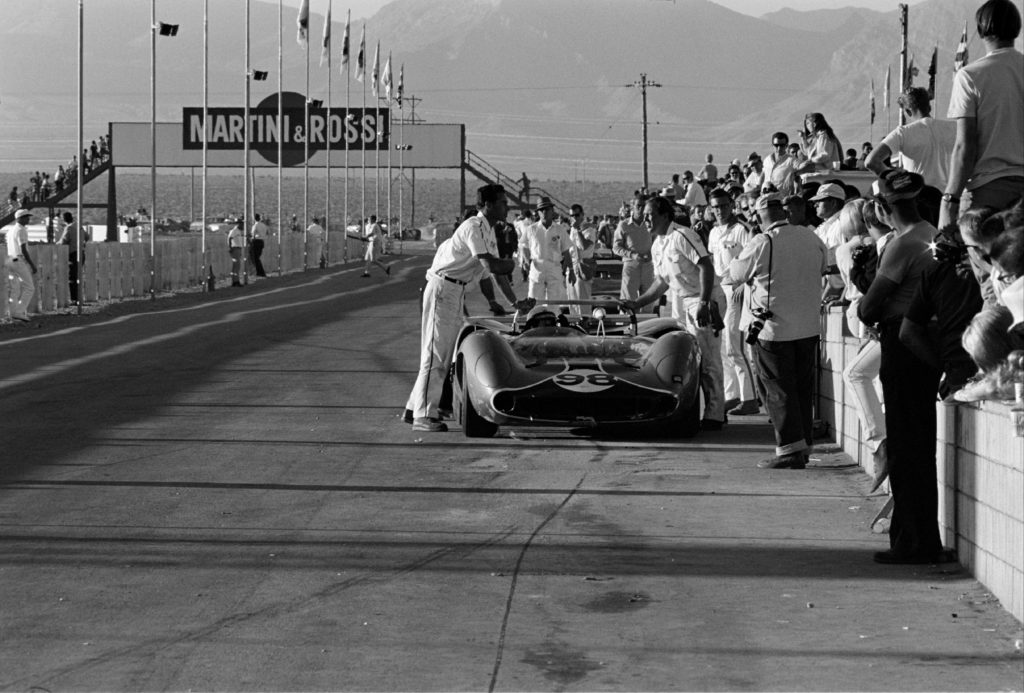
Parnelli Jones in a Chevrolet-powered Lola T70 Mk.2. (Photo by John Ethridge/The Enthusiast Network via Getty Images/Getty Images)
Stardust, named after the Las Vegas resort that funded the effort, was built in 1965 as means of attracting big money and a bright spotlight to the hotel and its hometown. In an area called Spring Valley, just to the west of the Strip, the three-mile 13-turn road course and a front stretch that doubled as a quarter-mile dragstrip hosted United States Road Racing Championship (USRRC), Can-Am, Trans-Am, USAC Indy Cars, and NHRA competition.
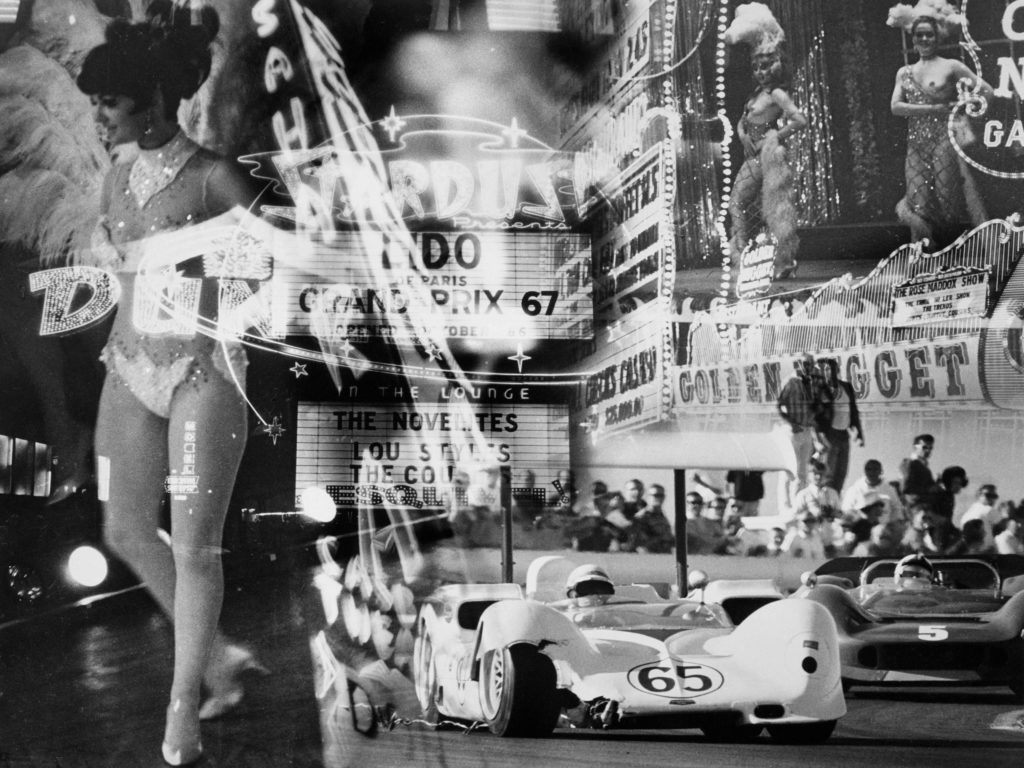
A photo montage (created in the darkroom by layering negatives together) of the Las Vegas Strip, featuring the Golden Nugget and the Stardust, and the 1966 Stardust Grand Prix. (Photo by David Attie/Getty Images)
As you can imagine, a mecca of speed and sport built on the outskirts of Sin City may also attract some unsavory characters. Its tumultuous beginnings were extensively researched and written about in the 2018 book Stardust International Raceway: Motorsports Meets the Mob in Vegas, 1965-1971.
According to the authors, Stardust was established by a notorious racketeer. Wiretaps, casino skimming, Howard Hughes, and the beginnings of Watergate could all be traced back to the raceway and its operators.
- Mark Donohue (left) and John Surtees (right). (Photo by John Ethridge/The Enthusiast Network via Getty Images/Getty Images)
- Jerry Titus in a Lotus 23 with an Oldsmobile engine. (Photo by Bob D’Olivo/The Enthusiast Network via Getty Images/Getty Images)
- Bruce McLaren in a Chevrolet-powered McLaren M1B. (Photo by Bob D’Olivo/The Enthusiast Network via Getty Images/Getty Images)
- Stirling Moss (left) and Dan Gurney (right). (Photo by John Ethridge/The Enthusiast Network via Getty Images/Getty Images)
The racing, on the other hand was legendary. International-level road racing talent clashed on the course. Hap Sharp took the first race in a Chaparral. John Cannon and John Surtees won the next year. And in 1967, Mark Donahue swept the Can-Am and Trans-Am races driving for Roger Penske. In 1968, Bobby Unser won in a rare open-wheel race two months before he won his first Indy 500. For five years, giants came to the desert and left with hardware.
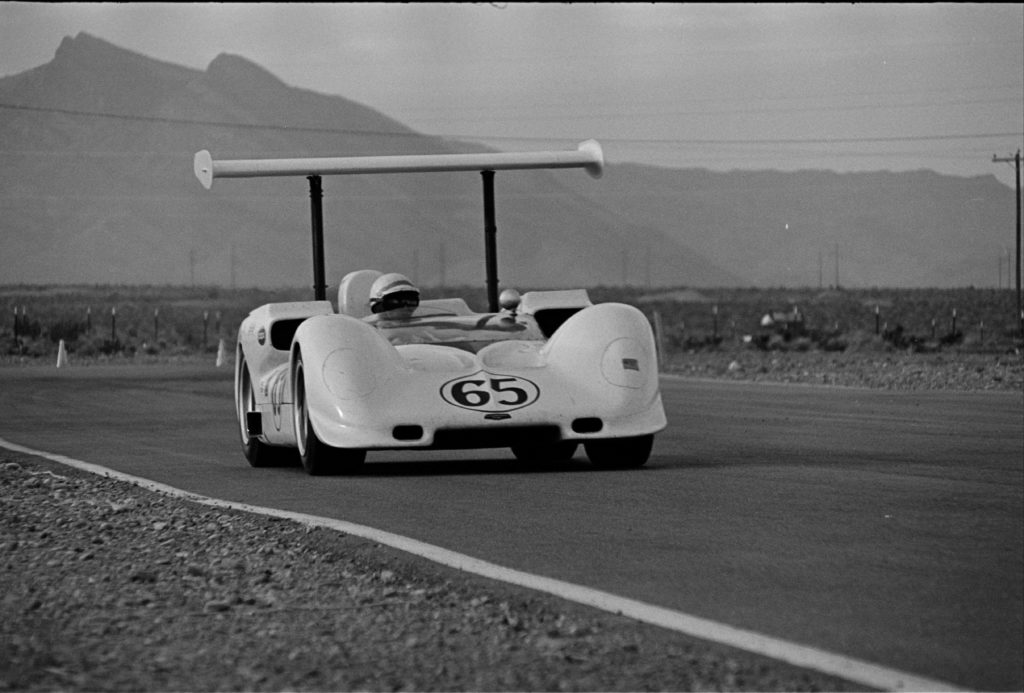
Phil Hill in a Chaparral 2E. (Photo by Bob D’Olivo/The Enthusiast Network via Getty Images/Getty Images)
This particular set of photos, shot by two greats, Bob D’Olivo and John Ethridge, captures the 1966 Can-Am race at Stardust, and serves as a time machine to the salad days of big-engine American sports car racing. Bowtie power, connecting rods, and primordial aerodynamic devices.
The Can-Am series was just taking off, and while most of the pack resembled muscle-bound versions of 1950s fiberglass road racers, there were hints of what was to come, such as the two white Chaparrals that sported upside down airplane wings seemingly mounted on popsicle sticks.
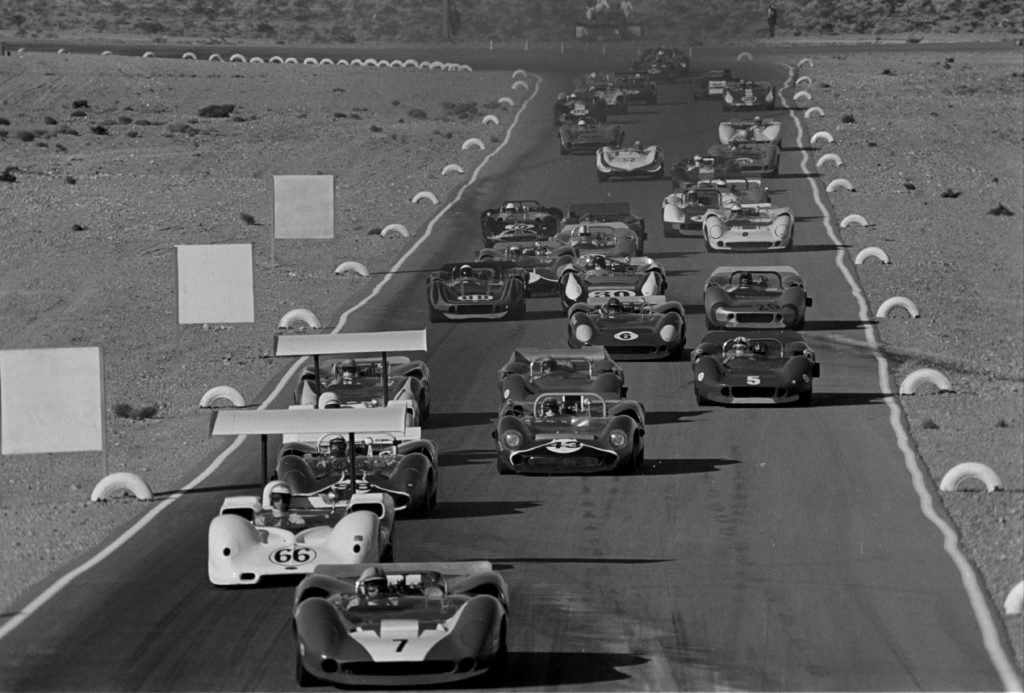
1966 Stardust Grand Prix (Photo by Bob D’Olivo/The Enthusiast Network via Getty Images/Getty Images)
Out front of the gaggle, John Surtees—a British madman who won in anything with wheels, amassing seven Grand Prix motorcycle racing championships and a Formula 1 championship (1964) driving for Ferrari. Surtees won the ’66 Can-Am meet in Vegas, aboard an open-cockpit Lola T70.
- John Surtees in a Chevrolet-powered Lola T70 Mk.2. (Photo by Bob D’Olivo/The Enthusiast Network via Getty Images/Getty Images)
- Surtees, victorious. (Photo by John Ethridge/The Enthusiast Network via Getty Images/Getty Images)
The Can-Am race looks like a regional autocross event compared to a modern F1 race. The track is but a strip of meandering tar over the desert floor and race cars are strewn about the paddock with minimal tents, trailers, or ropes. There are hardly any structures save for a bit of fencing along the front stretch and a Martini & Rossi-sponsored pedestrian bridge.
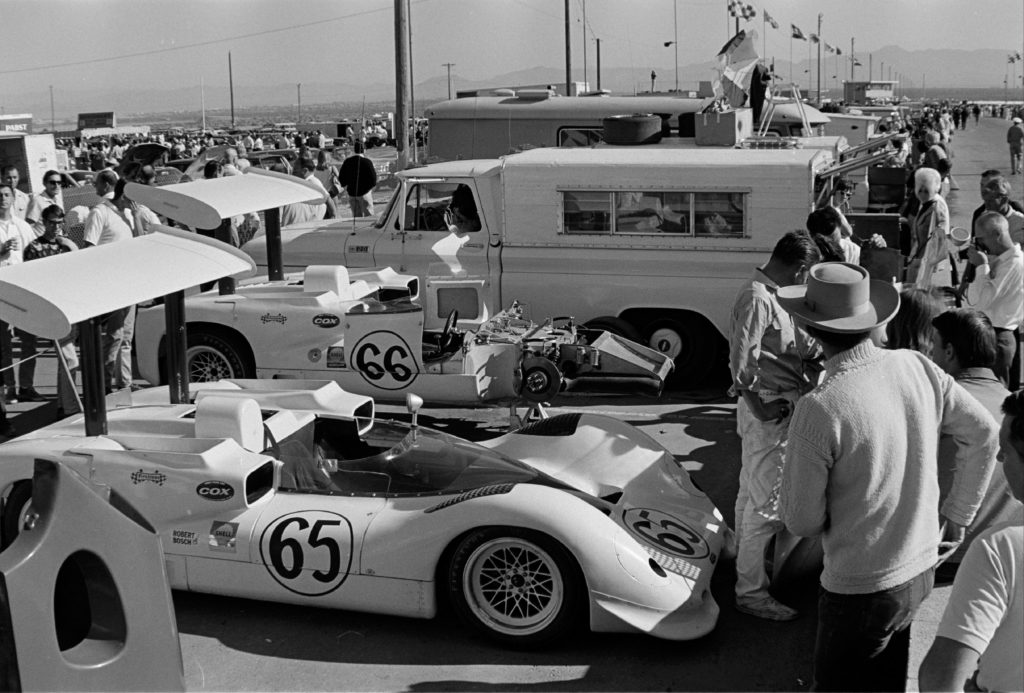
The Chaparral 2E duo of Phil Hill and Jim Hall draw a crowd of spectators in the paddock. (Photo by Bob D’Olivo/The Enthusiast Network via Getty Images/Getty Images)
The track closed in the early 1970s and is long lost to land development. Now, Spring Valley is subdivisions and convenience stores. This November, a few miles to the east of this commercial congestion, the lights will go out on the grid and a new era of Las Vegas racing will begin.

(Photo by Bob D’Olivo/The Enthusiast Network via Getty Images/Getty Images)



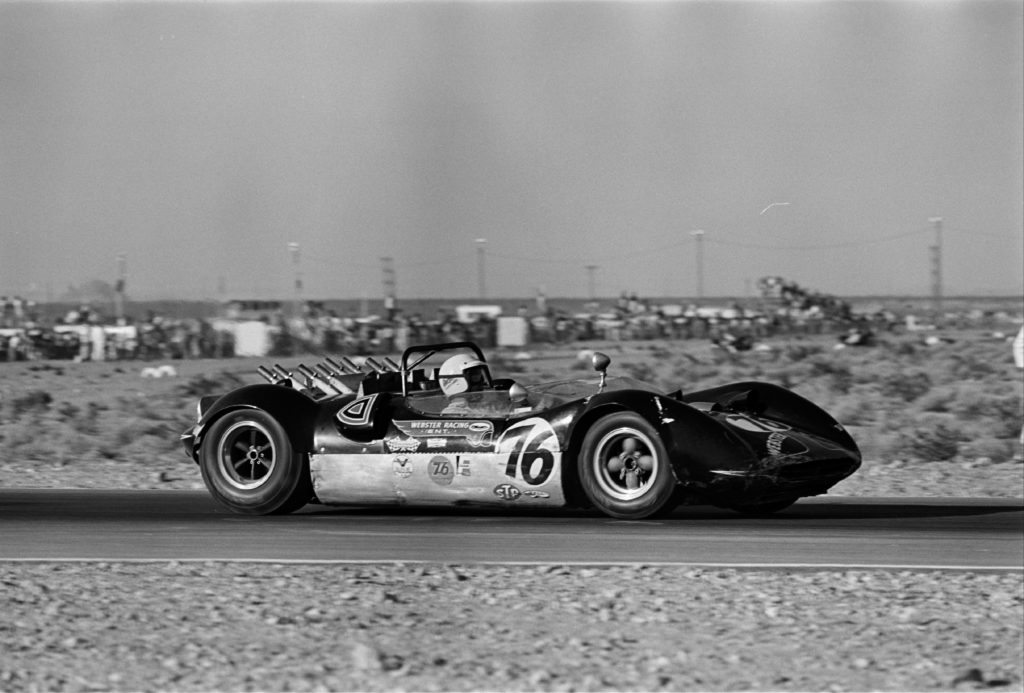

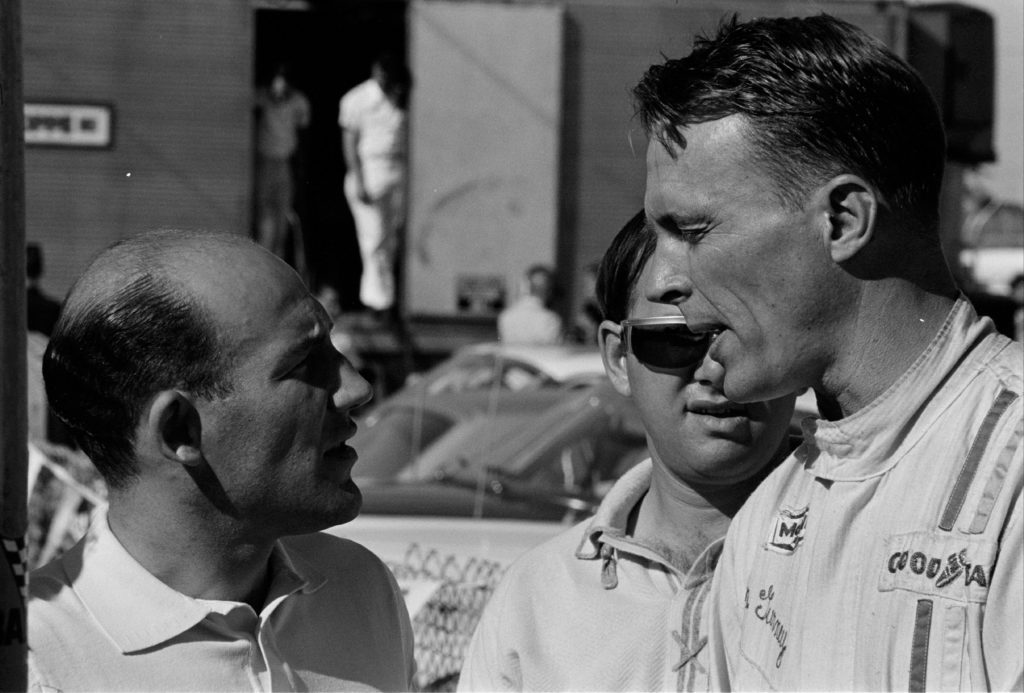


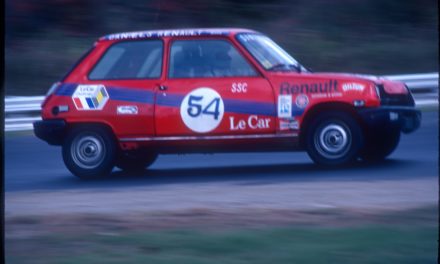
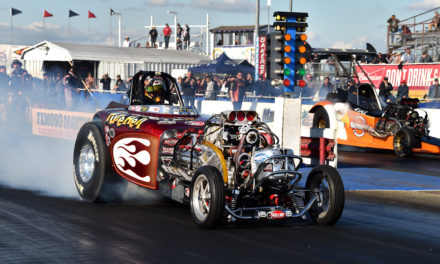
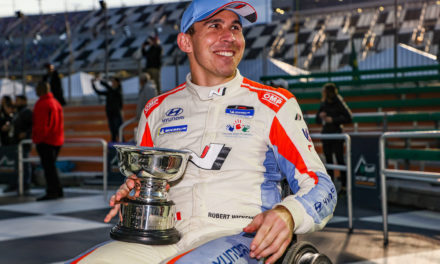
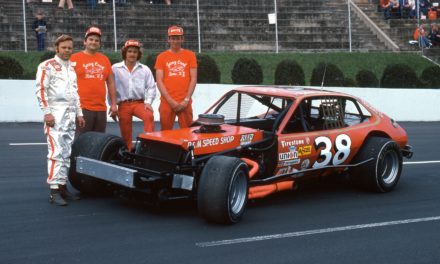
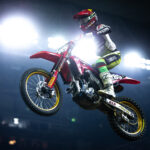
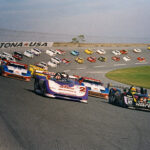
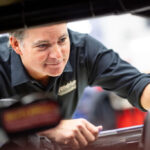
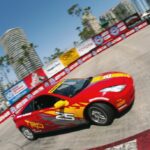
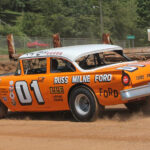
Loved them Chaparrals…
Probably hard to list all the terrific designs that came and were then outlawed…
Vacuum fan….6 wheel F1…
Those were really some great races…and very enjoyable for the fans as the pits were wide open and you could visit with the stars of the racing world.Formula One is about as far removed from those days as the sun is from Us.
I lived in Las Vegas at that time and attended all those races. During one of the races Jim Hall’s car hit the back of a car that had a mechanical problem and Jim’s car somersaulted over it and I believe he broke his arm. If you haven’t been to the petroleum Museum in Midland Texas where all of the chaparrals are on display it’s well worth the trip.
Great story of Racings past. Love those Chaparral cars. I just got back from Vegas on a business trip and drove by the location for the F-1 race. Man they have a long way to go to get things ready for November. I hope they get things done in time. F-1 won’t wait.
I went to the Caesar’s Palace F1 race in Vegas in 1981. The course was like a big autocross layout in a parking lot that was dead flat so you could see the entire course from the stands on the straight. The cars had underwings and skirts. They porpoised hugely. During a practice I talked to John Morton for a while. My daily driver was a Datsun 510 with an 1800 SSS engine and Brock suspension parts. The race was won by Alan Jones. After the race the security people went away and I was able to walk in to the motorhome area where the teams were celebrating. These were small motorhomes like you’d rent for a weekend. I saw Alan Jones go into one with the trophy in his hand. I followed him in. It was crowded and they were all drinking cans of beer. Nobody noticed me at first but then somebody looked at me. I just shrugged and said, “I’m just a fan.” Alan Jones said, “Give im a beer.” Somebody tossed me a can. I stood around sipping at it but felt out of place so I left. The event was more like an SCCA Regional, totally unlike today’s extravaganzas.
Although perhaps not as glamorous as the Can-Am days, there was also a brief adventure where sports cars visited the Las Vegas Motor Speedway to tackle the “roval” course in the late 90s. One of my favorite video games of the time included this layout, rebranded as “Desert Speedway” presumably to shirk licensing restrictions.
I loved Can-Am. I always went to Riverside except for my Army years. Incredible race cars, world-famous drivers, and JimHall brought something new every year. Never got to Stardust, but the scenery looks a lot like Riverside. Sadly, they both suffered the same fate.